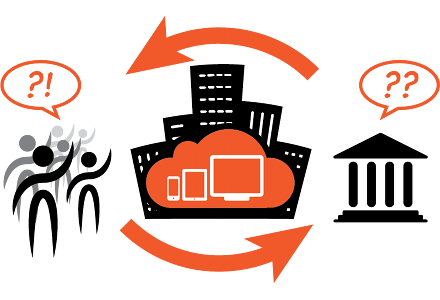


 Over the last decades, internet technologies established new forms of communication between citizens and public institutions. E-Governance is based on spreading information electronically and using communication tools for governance. It implies creating online platforms and websites, which includes information about government activities, planning and implementing state budget, vacancies, important issues and news. Government informs citizens and creates environment for mutual interaction, which results in increased civic participation.
Over the last decades, internet technologies established new forms of communication between citizens and public institutions. E-Governance is based on spreading information electronically and using communication tools for governance. It implies creating online platforms and websites, which includes information about government activities, planning and implementing state budget, vacancies, important issues and news. Government informs citizens and creates environment for mutual interaction, which results in increased civic participation.
In this guidebook you can find the methods through which you can monitor and observe e-services developed by public institutions, and determine to what extent they are utilised for establishing direct contact with citizens.
The guidebook is divided into the following sections:
1. Electronic request of public information
2. Proactive disclosure of information and its monitoring
3. Monitoring of websites of public institutions
4. Monitoring of Facebook pages of public institutions
5. Reporting cases of internet censorship
The guidebook was prepared within the framework of the project “Enhancing E-Skills of Controlling Government among Young People” by IDFI (Institute for Development of Freedom of Information).
This project is funded by the U.S. Embassy Tbilisi. The contents of this publication are those of the author(s) and do not necessarily represent the views of the Department of State.